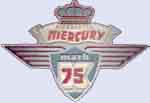You are right about ambient pressure Sam. I was thinking of capped off vessels. Master Oil viscosity changes dramatically with temperature change because there were no additives to keep it in a certain range. The additives were basically for extreme pressure and temperature. I don't remember exactly but it might be like 5 in the middle of a heat wave in August in Texas and 25 in a cold winter. But then it's lubricity reduces surface tension, So your mention of Klotz not recommending its product for oil injection systems due to viscosity, got me thinking. In it's early day petroleum based oils could not match the lubricity of Master Oil. But since then, synthetics have come on the market and are superior. This is what I'm wondering. Take two oils with the same viscosity. One standard petroleum base. The other a premium synthetic oil. Would there be enough lubricity difference with the synthetic to cause enough reduction in the surface tension of the gasoline to make a measurable difference?


 Thanks:
Thanks:  Likes:
Likes: 





 Reply With Quote
Reply With Quote




Bookmarks